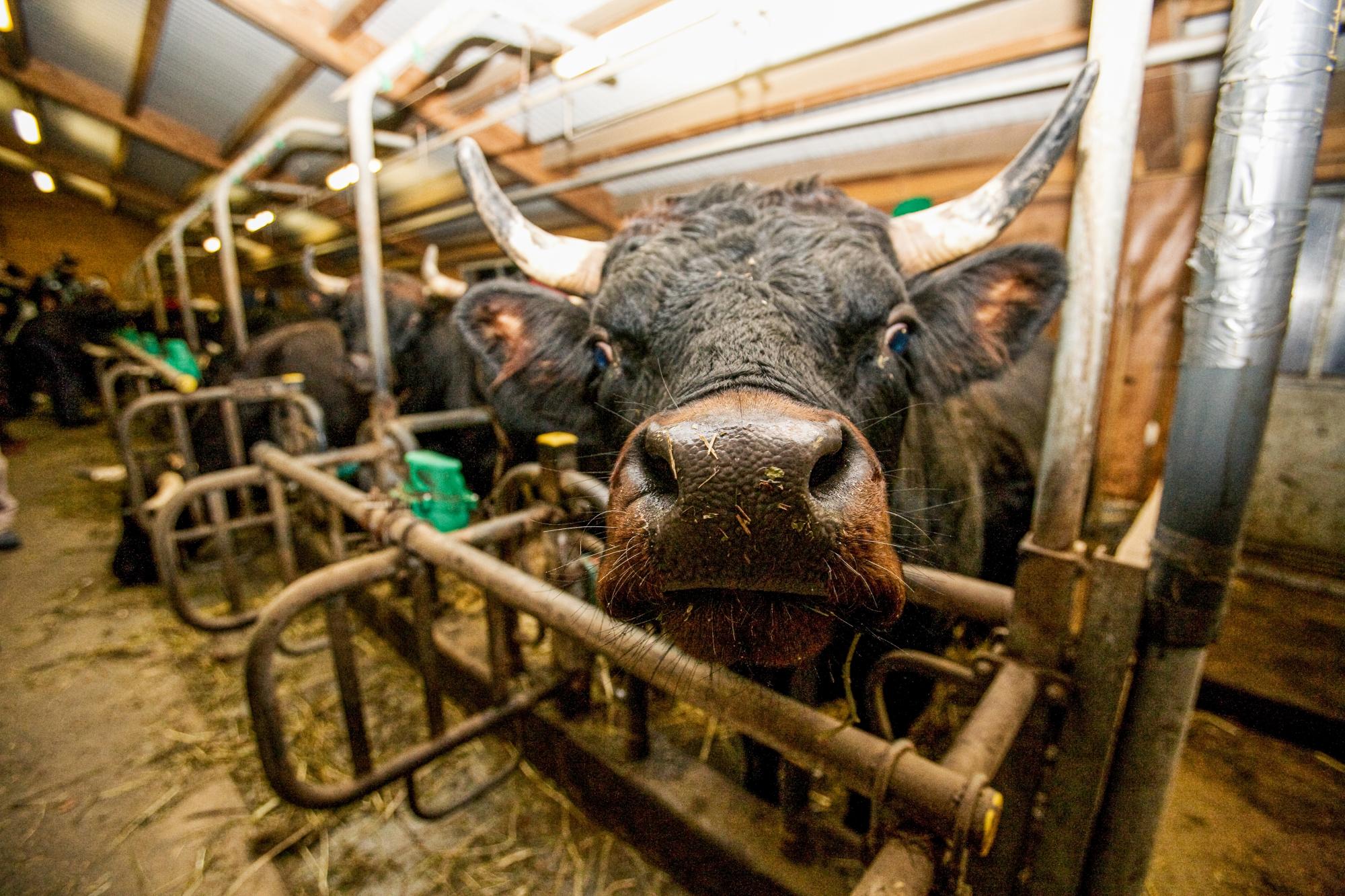
Milking
People have been milking us by hand for centuries. Nowadays, milking is done by machine. Let’s find out more about the subject, and you can have a go at milking the old-fashioned way!

People have been milking us by hand for centuries. Nowadays, milking is done by machine. Let’s find out more about the subject, and you can have a go at milking the old-fashioned way!
Mankind has been domesticating cows for over 10 000 years, and the reason for that was mainly so that people could take some of the milk from the cow’s mammary glands to consume it. These days, milking by hand has been replaced by automatic milking machines.
When we have milk, my friends and I are milked twice a day – once in the morning and once in the evening. Our owner makes the most of milking time to carefully check us over and to take care of us.
When we’ve just calved, we have a lot of milk in our teats. The first milk to come after giving birth is colostrum, which is very rich in proteins, antibodies, vitamin A and minerals. Our calves drink that milk.
Some of us are not milked in the springtime, as our owners are preparing us for performance fights and for going up to the Alpine pastures. That improves our fighting performance.


To get through that milk-free period, some owners also have a few dairy cows – often Simmental cows – so that cheese can be sold to walkers and hikers. Our friends who are black and russet, or sometimes black and white, can be found in the same shelters (‘chottes’) as us.
We might be great fighters, but as far as productivity is concerned there is less to brag about. Our cousins the Holsteins (almost half the Swiss herd) can yield up to 28 litres of milk a day over a 10-month period, whereas we produce barely 12 to 20 litres of milk a day during the winter period.
But on the other hand we are widely acclaimed for our particularly tender meat that is tasty and succulent. The ‘Fleur d’Hérens’ [‘Flower of Hérens’] label guarantees that we really were born here in Valais, that we grazed on mountain pasture land in the summer season, and that we mainly eat hay in the cowshed in winter.